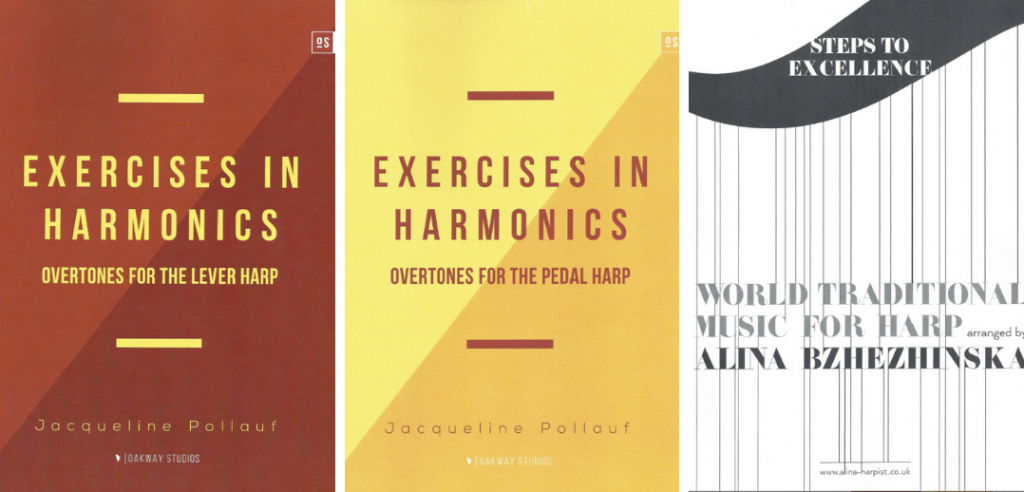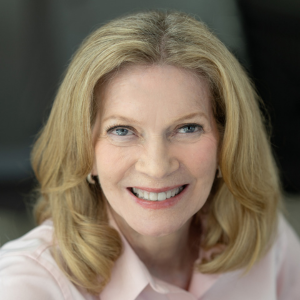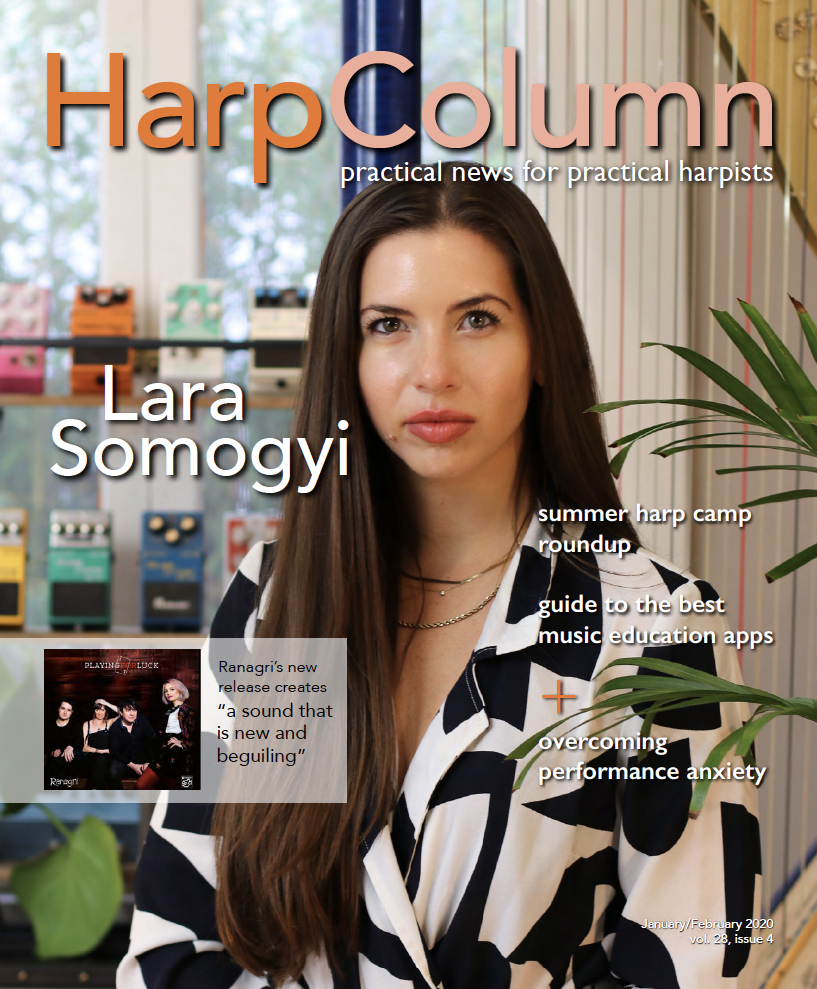
Improving your technique is on the list of New Year’s resolutions for many harpists, and there are some new publications that may help in that pursuit.
If refining your harmonics is your goal, Oakway Studios has published two volumes, Exercises in Harmonics: Overtones for the Lever Harp and Exercises in Harmonics: Overtones for the Pedal Harp by Jacqueline Pollauf. Regardless of which harp you play, these exercises are intended to “provide an intensive focus on harmonics, giving students the chance to practice…in a systematic method.” The harmonics are written where they are played.
The author assumes the player already knows how to correctly execute harmonics in both hands, but some explanation would have made this text more useful, as it is best not to assume knowledge. The exercises take you through scales of harmonics in all eight keys of a lever harp tuned to E-flat and all 15 keys of the pedal harp. The objective of playing so many scales in all keys is to give the player an opportunity to practice adapting the position of the hand on the string to accommodate the setting of the lever (or pedal). This is explained briefly in the foreword, but again, it is assumed that the player understands the effect the setting of the lever or pedal has on the string and, therefore, the position of the harmonic.
Next, the exercises feature a variety of intervals: harmonics that are octaves apart as well as tenths, sixths, fifths, and thirds. Here it would have been extremely helpful to have some explanation of the point of playing these intervals.
The next exercises use harmonics as an anchor or natural notes as an anchor, and then alternates natural notes and harmonics. At this point, the two volumes differ. The lever harp book has harmonics jumping in octaves, fifths, thirds, and triads. The next section requires playing harmonics and natural notes together in different intervals. This can be tricky to execute, so a little coaching on how to do it would be beneficial. Finally there are double harmonics in different intervals and ultimately, triple harmonics in triads.
The pedal harp book has some exercises of chromatic harmonics that could be considered a pedal exercise as well. Harmonics jumping in octaves, fifths, and triads are followed by harmonics and natural notes played together in different intervals. Finally there are double harmonics in several intervals and triple harmonics in triads.
These are useful exercises, and Pollauf is obviously very organized in her approach. However, more explanations of the how-tos, whys, and wherefores, and perhaps even some illustrations would make this an even more valuable text.
For those who want to practice special effects, Alina Bzhezhinkska has arranged some world traditional music for harp in a book published by Creighton’s Collection called Steps to Excellence. This collection is “designed to encourage harp players to expand their knowledge of innovative harp techniques and special effects.” With a goal of helping you become more creative in your practice, each piece is supposed to teach a new pattern and includes an explanation of how to play it. Unfortunately, the explanations are very limited and the pieces get progressively more difficult.
The first piece is a traditional Polish tune, “Hey, Bystra Woda!” There are some pedal/lever changes, neither of which are notated. The effect introduced is tapping on the sound board. Both the effect and the arrangement are unremarkable. “Morning” is a traditional Scottish tune that introduces prés de la table (pdlt). This is a pleasant, fairly simple arrangement. Several scale glissandi are included in “Lullaby Si Miadeniec,” and as you might expect, this is a tranquil, soothing piece.
The Scottish traditional tune, “John Anderson” features harmonics and right hand trills. “Kang Khoa Kin Kroy” is a Thai tune. Here Bzhezhinska introduces the vibrato effect as well as striking the wire strings with the open palm. There is also some knocking on the soundboard and pdlt. The arrangement of the traditional Irish tune, “She Moved through the Fair” is very non-traditional. This has a few accidentals, notated for lever harp with the accidental in a box (e.g. 4F#), and with pedal notation in the center of the staff. There are several tremolos, taps on the soundboard, and harmonics to end the piece.
“Lao Kratob Mai” is a Thai Bamboo Dance, and it incorporates Bartok pizzicato, playing with fingernails close to the soundboard, violently striking the strings in a certain range, and striking the soundboard with a flat hand. She also uses tremolos, harmonics, and a scale gliss.
“Mi Hamaca” is a Mexican folk song with a likeable melody that vacillates between G minor and G major, making it easier to play on pedal harp than lever harp. New effects introduced include using a pencil to make an upward gliss on the front of the tuning pins and a tremolo using the pencil to strike the insides of the holes on the back of the harp—not on my harps, of course, but you are welcome to do it to yours.
A Ukrainian/Lemko folk song is probably the most difficult piece with a tricky left hand in sixteenth notes. This includes bisbigliando, nail glisses played between the bridge pin and tuning pins, constant up and down glisses on the wire strings, and the xylophonic effect. The popular Chinese folk song, “Mo Li Hua (Jasmine Flower)” is the final piece. The only effect not previously introduced is a pedal or lever slide.
A video accompanying this book illustrating how to execute these effects would be exceedingly helpful. It may be difficult to find the right audience for some of this music, but you’ll certainly get a chance to try out some special effects. •







